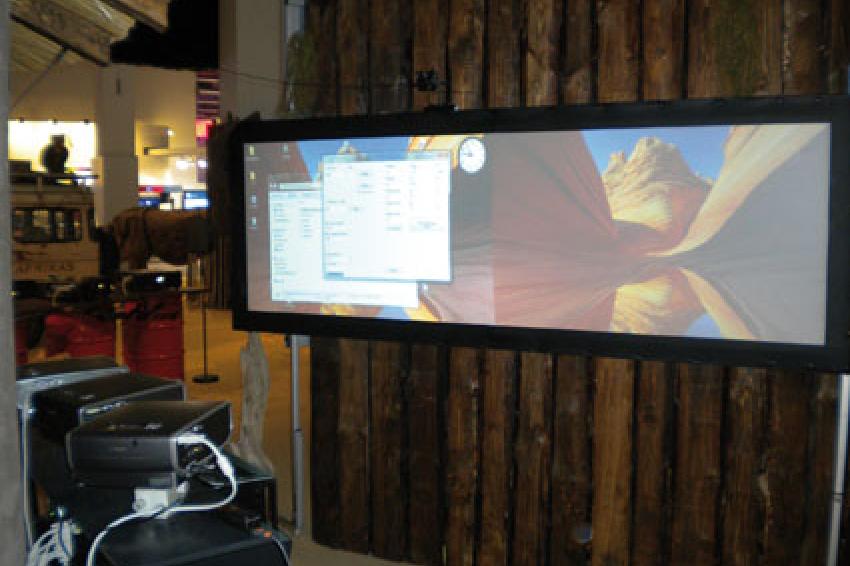Q-Foil Opens Up New Possibilities
Human Machine Interfaces Using Large Area Photosensors
New Technology - The Q-foil, a sensor technology developed by isiQiri interface technologies, makes it possible to equip large areas with continuous photodetectors that are flexible and can sense the position of localized light and shadow areas with high precision. The first application, an interactive projection screen called Q-screen will hit the market end of this year.
isiQiri has developed the Q-foil technology, a novel sensor that can trace a light spot over a large surface area. Based on an advanced coupling of modern opto-electronic devices with a high-tech plastic foil comprising optically active molecules, this technology yields a flexible and highly transparent sensor. At the heart of the Q-foil is a polycarbonate foil loaded with highly luminescent dyes that efficiently scatter the incoming light into the waveguide mode of the foil. This light can then be measured at certain points across the foil without having to cover the entire area with photoelectric elements.
Less than a millimeter in thickness and bendable, a Q-Foil can pinpoint and trace the location of one or several light spots hitting its surface with high accuracy. High cost efficiency and ease of tailoring the size and accuracy to the demands of manifold applications allow the Q-foil to be the basis of a new generation of human interface devices. Q-Foils are facilitating and enhancing the interaction of people with computers, robots and other high-tech machinery.
Applications
The isiQiri technology can be applied according to two different basic principles:
Light sensor: A laser beam hits the Q-Foil and causes a signal. This is transported to the photodiodes in the corners and read out. Using these signals it is calculated where the laser hit about 60 times a second. By putting the sensor modules side by side, arbitrarily large surfaces can be made interactive.
Shadow sensor: Stripes of Q-Foils are mounted on all 4 sides within a frame. In the corners of the frame there are lasers that generate a light curtain in form of a fan so that you have 4 light curtains at a time. If you place an object (like a pointing finger) into the light curtain the Q-Foils will detect the shadows on each side and the position of the object can be calculated.
Both principles can be used on the same area. Thus you get three possible forms of interaction:
- with a laser from the distance
- with a light pen from zero distance (for writing and drawing)
- with a finger (multitouch sensitivity)
All three forms of interaction can be employed simultaneously. A video explaining the technology can be found at http://www.youtube.com.
Products
The Q-Foil-technology can be employed in a huge number of applications, some of them already existing and some completely new. Promising products are:
- interactive projection screens (presentation, collaborative environments, video gaming, audio-visual, home cinema, marketing, etc.)
- digital flipcharts (every sheet of paper being equipped with a Q-Foil)
- smart clothing (clothing with integrated electronics)
- industrial sensors
As first product, the Q-screen will be launched by the end of 2010 as an interactive projection screen for presentations, events and interactive advertising. With the Q-screen system, people can use laser pointers to interact from any distance with a digital projection on a large screen to enhance presentations, play games or get information about products.
About isiQiri
isiQiri interface technologies is a technology startup located in Linz, Austria. The company is a spin-off of the Johannes Kepler University and was legally established on Sept. 1, 2009. Up to that point 18 month of R&D and company building had already taken place. The founders of isiQiri are Robert Koeppe, who is the inventor of the Q-Foil-technology, and Richard Ebner. Robert Koeppe is in charge for research and development as well as production.
Contact
isiQiri
Hafenstr. 47-51
4020 Linz
Austria
+49 732 90155251







